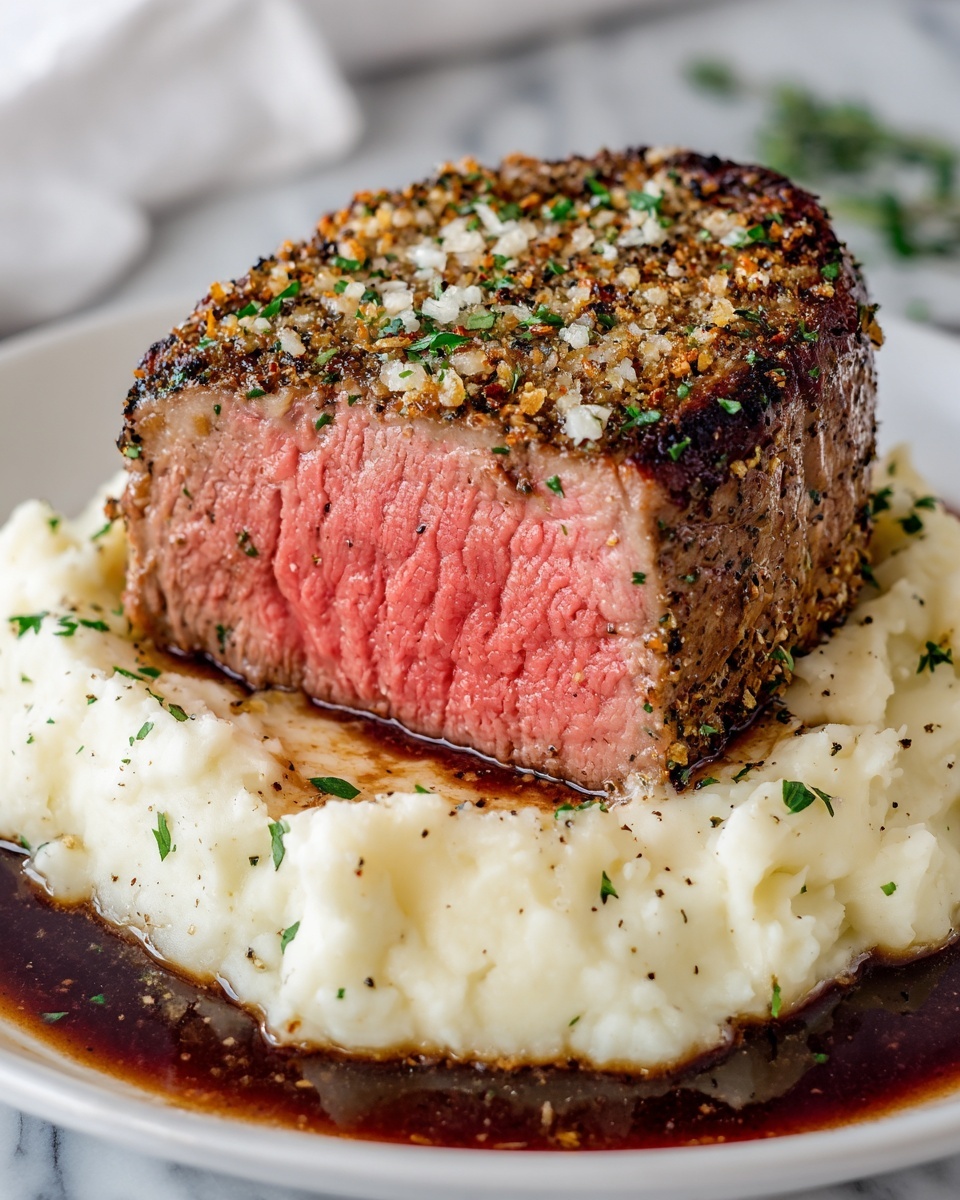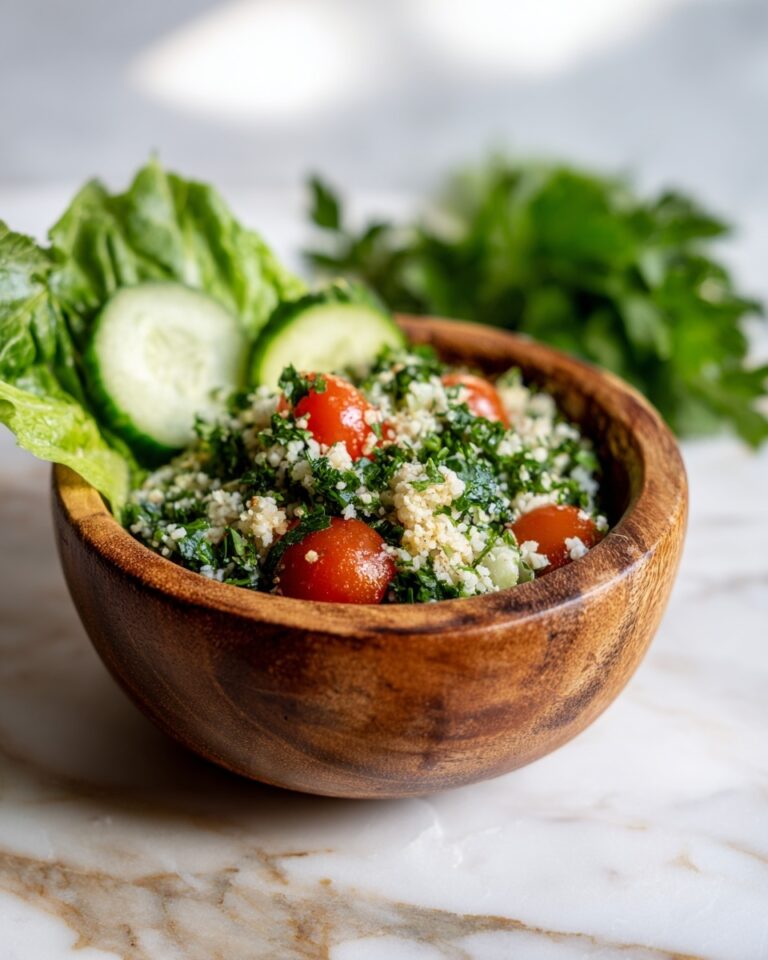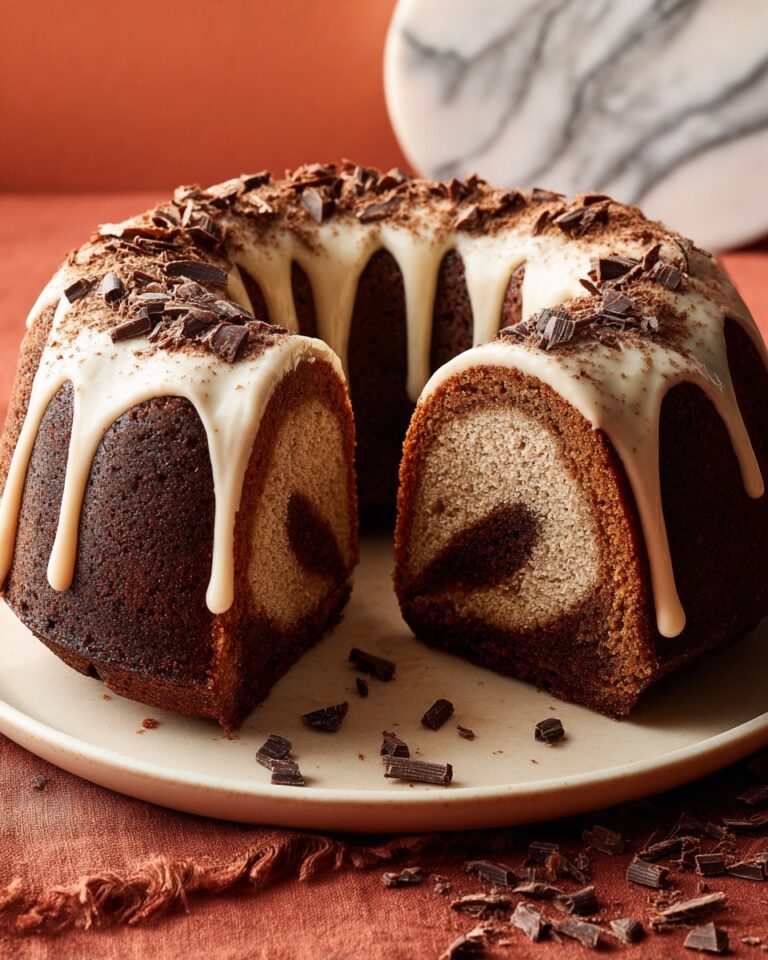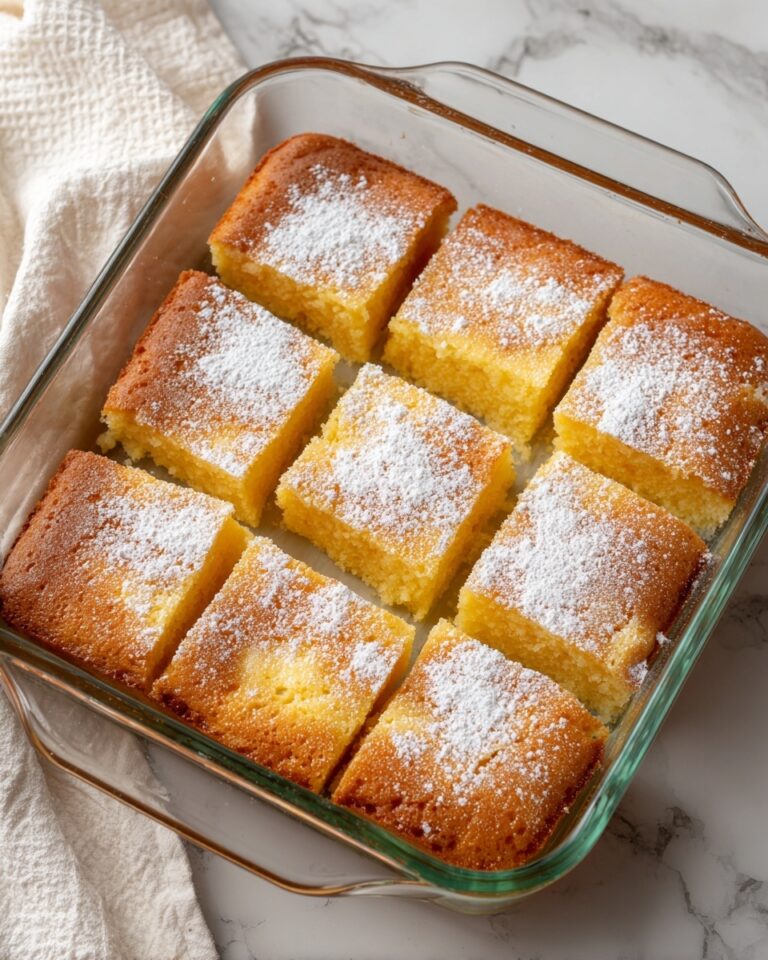If you’re a fan of classic French cuisine that absolutely wows, then you’re going to fall head over heels for this Chateaubriand with Béarnaise Sauce Recipe. Imagine a perfectly cooked, tender center-cut beef tenderloin, rich and juicy, paired with a velvety, herbaceous Béarnaise sauce that dances on your palate. This dish isn’t just for special occasions—it’s a celebration of flavor and technique wrapped up in one glorious plate. Whether you’re cooking for two or want to impress your dinner guests, this recipe brings restaurant-quality magic straight to your kitchen.

Ingredients You’ll Need
These ingredients are straightforward yet crucial; each one plays an important role in creating the perfect balance of taste, texture, and color that makes this dish so memorable.
- Center-cut beef tenderloin (Chateaubriand cut, 1.5–2 lb): The star of the show, this ultra-tender cut provides the perfect canvas for rich flavors.
- Olive oil (2 tablespoons): Adds a hint of fruity richness and helps achieve a beautiful sear on the beef.
- Unsalted butter (2 tablespoons for searing + ½ cup melted for sauce): Used for basting and in the sauce, it brings luscious creaminess.
- Fresh thyme (2 sprigs): Infuses a subtle earthy aroma during cooking.
- Garlic (2 cloves, smashed): Adds signature savory depth to the beef.
- Salt and freshly ground black pepper: Essential for seasoning and enhancing all flavors.
- White wine vinegar (¼ cup): Gives the Béarnaise sauce its distinctive tangy base.
- Dry white wine (¼ cup): Adds complexity and helps balance the richness.
- Shallots (2 tablespoons, finely chopped): Provide a gentle sweetness and texture contrast in the sauce.
- Fresh tarragon (1 tablespoon, chopped): The defining herb of Béarnaise, it lends a bright, anise-like flavor.
- Egg yolks (2): Create the rich, silky emulsion that turns the sauce into a creamy masterpiece.
- Salt and pepper: To taste, balancing all the components beautifully.
How to Make Chateaubriand with Béarnaise Sauce Recipe
Step 1: Prepare and Season the Beef
Start by preheating your oven to 400°F (200°C). Take your beef tenderloin and pat it completely dry with paper towels—this ensures a perfect, crispy crust. Generously season all sides with salt and freshly ground black pepper. Don’t be shy here; the seasoning is key to unlocking the meat’s flavor.
Step 2: Sear the Beef
Heat olive oil in a cast iron skillet or ovenproof pan over high heat until it just starts to shimmer. Carefully place the beef in the hot pan, searing each side for about 2 to 3 minutes until you get a gorgeous golden crust. This step locks in those juices that make the Chateaubriand so tender and flavorful.
Step 3: Add Aromatics and Baste
Reduce heat slightly and add the unsalted butter, fresh thyme sprigs, and smashed garlic cloves to the pan. Tilt the pan and use a spoon to baste the beef repeatedly with the melted butter for 1 to 2 minutes. This bath of butter and herbs infuses every bite with wonderful aromatic richness.
Step 4: Roast the Beef in the Oven
Transfer your skillet to the oven and roast the beef until it reaches an internal temperature of 125°F (52°C) for medium-rare doneness. Depending on thickness, this usually takes about 15 to 20 minutes. Cooking to perfect medium-rare keeps the tenderloin juicy and tender beyond belief.
Step 5: Rest the Beef
Remove the pan from the oven and carefully transfer the beef to a cutting board. Tent it loosely with foil and let it rest for at least 10 minutes. Resting allows the juices to redistribute, so each slice stays wonderfully moist and flavorful.
Step 6: Prepare the Béarnaise Sauce
While your beef rests, get to work on the star accompaniment. In a small saucepan, combine white wine vinegar, dry white wine, shallots, and half of the chopped fresh tarragon. Simmer gently until the liquid is reduced by half. This concentrated reduction gives your sauce a punch of tang and herbiness.
Step 7: Whisk Egg Yolks and Create Emulsion
Strain the reduction into a heatproof bowl to remove solids. Place the bowl over a double boiler or a larger pot of gently simmering water, making sure the bowl doesn’t touch the water. Whisk in the egg yolks constantly until the mixture thickens and becomes creamy—this step takes patience but is where the magic begins.
Step 8: Add Butter and Season Sauce
Slowly drizzle in the melted butter while continuously whisking, creating a smooth, glossy Béarnaise sauce. Stir in the remaining tarragon, then season with salt and freshly ground black pepper to taste. The sauce should be rich, velvety, and bursting with fresh herbs.
Step 9: Slice and Serve
Slice your rested Chateaubriand into thick, generous cuts. Serve alongside a generous spoonful of your homemade Béarnaise sauce. This is the moment when everything comes together, creating a truly unforgettable dish.
How to Serve Chateaubriand with Béarnaise Sauce Recipe

Garnishes
A sprinkle of fresh tarragon over the plated beef adds a lovely pop of color and herby aroma that complements the Béarnaise sauce perfectly. You can also add a few whole thyme sprigs for a rustic, elegant touch.
Side Dishes
This dish shines best with classic, simple sides that let the beef and sauce take center stage. Think crisp haricots verts tossed with a little butter and garlic, roasted baby potatoes with rosemary, or glazed carrots for sweetness and color contrast.
Creative Ways to Present
For a truly special presentation, arrange the steak slices fanned out on a warm plate with a spoonful of Béarnaise drizzled artistically. Pair with a nest of lightly sautéed greens or a quenelle of creamy mashed potatoes to elevate your plating. Presentation matters when crafting a memorable dining experience.
Make Ahead and Storage
Storing Leftovers
If you have any left of your spectacular Chateaubriand with Béarnaise Sauce Recipe, wrap the beef tightly in foil or plastic wrap and store it in the refrigerator for up to 3 days. Keep the sauce separate in an airtight container to preserve its delicate texture and flavor.
Freezing
While the beef is best enjoyed fresh, you can freeze leftover cooked beef tenderloin for up to 2 months. Freeze the Béarnaise sauce separately in small portions, as it can be tricky to freeze without separation. Defrost gently in the fridge overnight before reheating.
Reheating
When reheating leftover beef, do so gently in a low oven or on the stovetop to keep the meat tender and juicy. Béarnaise sauce is best warmed slowly in a double boiler to avoid breaking its delicate emulsion. Avoid microwaving, which can cause the sauce to separate.
FAQs
What is the best cut of beef to use for Chateaubriand?
The classic cut for Chateaubriand is the center section of the beef tenderloin. It’s prized for its tenderness and mild flavor, which works beautifully with the rich Béarnaise sauce.
Can I make Béarnaise sauce without fresh tarragon?
Fresh tarragon is key to authentic Béarnaise sauce, but if you don’t have it, dried tarragon can work in a pinch—though the flavor won’t be as vibrant. Adding a tiny bit of lemon zest can help brighten the sauce too.
How do I know when the Chateaubriand is perfectly cooked?
Using a meat thermometer is your best bet. For medium-rare, look for an internal temperature around 125°F (52°C). Remember, the meat will continue to cook as it rests, so pulling it out just a bit early is ideal.
Is this recipe suitable for beginners?
While there are a few techniques like making the Béarnaise sauce that require some attention, this recipe is very doable with patience. Take your time, and you’ll be rewarded with a restaurant-quality meal at home.
What wine pairs well with Chateaubriand and Béarnaise sauce?
A medium to full-bodied red wine such as a Bordeaux, Pinot Noir, or Cabernet Sauvignon complements the richness of the beef and the herbaceous sauce beautifully. For a white option, a buttery Chardonnay works as well.
Final Thoughts
Simplifying such a magnificent French classic might sound like a challenge, but this Chateaubriand with Béarnaise Sauce Recipe strikes the perfect balance between elegance and approachability. It’s a dish that invites you to savor every moment—from the delicious searing to the silky sauce, all the way through to the last bite. Trust me, once you try this, it will become one of your favorites to make whenever you want to add a touch of culinary magic to your table.
Print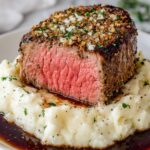
Chateaubriand with Béarnaise Sauce Recipe
- Prep Time: 10 minutes
- Cook Time: 35 minutes
- Total Time: 45 minutes
- Yield: 2 servings
- Category: Main Course
- Method: Roasting
- Cuisine: French
Description
Chateaubriand is a classic French dish featuring a center-cut beef tenderloin, seared to perfection and roasted to a tender medium-rare. Served with a rich, creamy béarnaise sauce made from a reduction of white wine vinegar, white wine, shallots, and fresh tarragon, this elegant meal pairs beautifully with traditional sides like haricots verts or roasted vegetables. Expertly combining pan-searing and oven roasting techniques, this recipe delivers a flavorful, juicy centerpiece for a sophisticated dinner.
Ingredients
For the Beef:
- 1 (1.5–2 lb) center-cut beef tenderloin (Chateaubriand cut)
- 2 tablespoons olive oil
- 2 tablespoons unsalted butter
- 2 sprigs fresh thyme
- 2 cloves garlic, smashed
- Salt and freshly ground black pepper, to taste
For the Béarnaise Sauce:
- 1/4 cup white wine vinegar
- 1/4 cup dry white wine
- 2 tablespoons finely chopped shallots
- 1 tablespoon fresh tarragon, chopped
- 2 egg yolks
- 1/2 cup unsalted butter, melted
- Salt and pepper, to taste
Instructions
- Preheat the Oven and Season Beef: Preheat your oven to 400°F (200°C). Pat the beef dry using paper towels to ensure a good sear, then season generously with salt and freshly ground black pepper on all sides to enhance flavor.
- Sear the Beef: Heat olive oil in a cast iron skillet or ovenproof pan over high heat until shimmering. Add the beef and sear on all sides, about 2 to 3 minutes per side, until a deep golden-brown crust develops, locking in juices.
- Baste with Butter and Aromatics: Add the unsalted butter, fresh thyme sprigs, and smashed garlic cloves to the pan. Tilt the pan slightly and use a spoon to baste the beef continuously with the melted butter mixture for 1 to 2 minutes, infusing it with rich flavor.
- Roast in Oven: Transfer the skillet with the beef into the preheated oven. Roast until the internal temperature reaches 125°F (52°C) for medium-rare doneness, which should take about 15 to 20 minutes depending on the thickness of the tenderloin.
- Rest the Beef: Remove the skillet from the oven and transfer the beef to a cutting board. Tent loosely with foil and let it rest for 10 minutes to allow juices to redistribute, ensuring a moist and tender result.
- Prepare the Béarnaise Sauce Reduction: Meanwhile, combine white wine vinegar, dry white wine, finely chopped shallots, and half of the chopped tarragon in a small saucepan. Simmer gently until the liquid reduces by half, concentrating the flavors.
- Strain and Whisk Egg Yolks: Strain the reduction into a heatproof bowl to remove solids. Place the bowl over a double boiler or set it over simmering water. Add egg yolks to the warm reduction and whisk continuously until the mixture thickens, ensuring it does not scramble.
- Incorporate Butter and Season Sauce: Slowly drizzle in the melted unsalted butter while continuously whisking to create a smooth, creamy sauce. Stir in the remaining fresh tarragon and season with salt and freshly ground black pepper to taste.
- Slice and Serve: Slice the rested beef tenderloin into thick medallions. Serve immediately with the freshly prepared béarnaise sauce and your choice of classic sides such as haricots verts, roasted potatoes, or carrots for a complete and elegant meal.
Notes
- For best results, use a meat thermometer to monitor the internal temperature of the beef to achieve perfect medium-rare.
- If you do not have a double boiler, use a heatproof bowl set over a pot of simmering water to gently cook the béarnaise sauce.
- Resting the beef is crucial to retain its juices and ensure tenderness.
- Chateaubriand is ideal for special occasions due to its rich flavor and elegant presentation.
- Can be paired with a full-bodied red wine such as Cabernet Sauvignon or Bordeaux for an enhanced dining experience.

